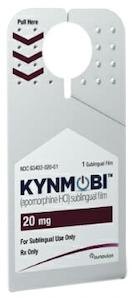Apomorphine and Alcohol/Food Interactions
There is 1 alcohol/food/lifestyle interaction with apomorphine.
Apomorphine Food/Lifestyle
Moderate Food Interaction
Alcohol can lower your blood pressure and add to the effects of apomorphine. Drinking alcohol while taking apomorphine may decrease your blood pressure and cause drowsiness. This can cause nausea, extreme drowsiness, slow heartbeat, headaches, and dizziness. If you take apomorphine with alcohol tell your doctor if you have any of these symptoms. It is important to tell your doctor about all other medications you use, including vitamins and herbs. Do not stop using any medications without first talking to your doctor.
Switch to professional interaction data
Apomorphine drug interactions
There are 601 drug interactions with apomorphine.
Apomorphine disease interactions
There are 10 disease interactions with apomorphine which include:
- alcoholism
- asthma
- cardiovascular/cerebrovascular disease
- dyskinesia
- hypersomnia
- liver disease
- QT prolongation
- renal dysfunction
- hypotension
- psychosis
More about apomorphine
- apomorphine consumer information
- Check interactions
- Compare alternatives
- Pricing & coupons
- Reviews (4)
- Side effects
- Dosage information
- During pregnancy
- Drug class: dopaminergic antiparkinsonism agents
- Breastfeeding
Related treatment guides
Drug Interaction Classification
| Highly clinically significant. Avoid combinations; the risk of the interaction outweighs the benefit. | |
| Moderately clinically significant. Usually avoid combinations; use it only under special circumstances. | |
| Minimally clinically significant. Minimize risk; assess risk and consider an alternative drug, take steps to circumvent the interaction risk and/or institute a monitoring plan. | |
| No interaction information available. |
See also:
Further information
Always consult your healthcare provider to ensure the information displayed on this page applies to your personal circumstances.


